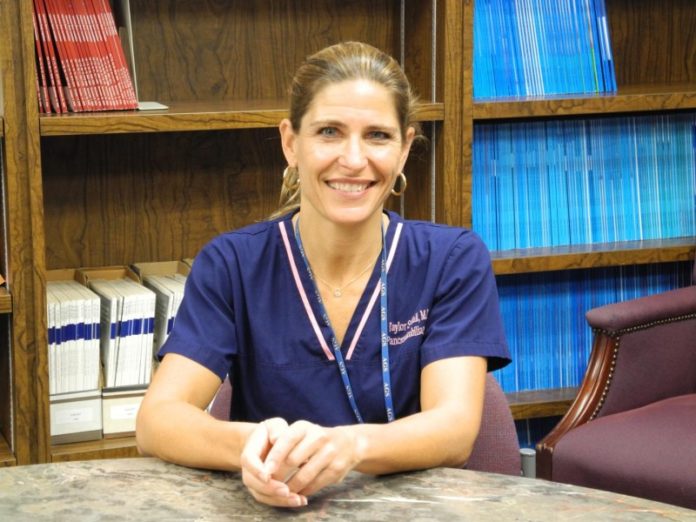
Gallbladder removal is one of the most common operations performed in older adults. Yet, research from the University of Texas Medical Branch at Galveston shows many patients who would benefit most from the surgery don’t get it.
A previous study by the UTMB researchers showed that a combination of factors — age, sex, race, other associated illnesses and severity of gallbladder symptoms, for example — put a patient in the most danger for acute gallbladder attack. This study resulted in the creation of a predictive model for determining patients at most risk — and thus most likely to benefit from having their gallbladders removed. Then the researchers put their predictive model to the test.
Their new study looks at 11 years of billing records of more than 160,000 Texas Medicare patients, 66 and older, who had an initial episode of gallstone trouble. The researchers used their predictive model to determine which of these patients was most likely headed for a dangerous gallbladder attack over the course of two years. The patients in the highest risk category should be receiving gallbladder removal surgery most often. But the UTMB study, available online in the January edition of the Journal of the American College of Surgeons, showed the reverse to be true. Removal of the gallbladder did not seem to depend on risk and in the healthiest patients, those in the most danger had their gallbladders removed least often.
Dr. Taylor Riall, professor of surgery at UTMB and lead author of the study, said that even though gallbladder removal is recommended for patients with gallstone problems, “Less than a quarter of patients in this study had their gallbladders removed. We sought to determine whether the decision to have the gallbladder removed was actually based on their risk of having gallstone-related complications in the next two years.”
Using their model, the researchers identified which patients were in low, moderate or high-risk categories for an acute gallbladder episode that required hospitalization. This new study validates the accuracy of their predictive model. Among those who did not have their gallbladder removed, less than 20 percent in the low-risk group ended up being hospitalized for gallbladder-related issues — for the high-risk group, 65 percent were hospitalized within two years of first symptoms.
In looking at patients who had the surgery, the study showed risk was not related to removal of the gallbladder. Only 22 percent of people in the low-risk group, 21 percent in the moderate-risk group, and 23 percent in the high-risk group had their gallbladder removed. In the healthiest older patients, gallbladder removal was performed in 34 percent of low-risk patients but in only 27 percent of the highest-risk patients. Also, less than 10 percent of patients who did not have their gallbladder removed even saw a surgeon after the initial episode.
The risk of developing gallstones increases with age. While a person under 40 has about an 8 percent chance of developing gallstones, the risk jumps to more than 50 percent in people 70 years and older. Gallbladder disease is the most common cause of acute abdominal pain in older patients and removal of the gallbladder accounts for a third of abdominal operations in patients over 65.
The UTMB risk prediction model provides a starting point for individualized care and shared decision making in older patients with gallstones. Integrating this model into clinical practice, especially at the level of the primary care physician, may improve outcomes by increasing elective gallbladder removal rates in the patients at highest risk and prevent future complications in this vulnerable population. This information would also allow physicians to avoid gallbladder removal in patients who are a high surgical risk and at low risk for developing complications from their gallstones.
In patients with lower risk and the decision for gallbladder removal is based on preference, this information can help patients make decisions in the context of their symptoms and the impact on their quality of life.
Story Source:
The above story is based on materials provided by University of Texas Medical Branch at Galveston. Note: Materials may be edited for content and length.
Journal Reference:
- Taylor S. Riall, Deepak Adhikari, Abhishek D. Parmar, Suzanne K. Linder, Francesca Dimou, Winston Crowell, Nina P. Tamirisa, Courtney M. Townsend, James S. Goodwin. The Risk Paradox: Use of Elective Cholecystectomy in Older Patients Is Independent of Their Risk of Developing Complications. Journal of the American College of Surgeons, 2014; DOI: 10.1016/j.jamcollsurg.2014.12.012
